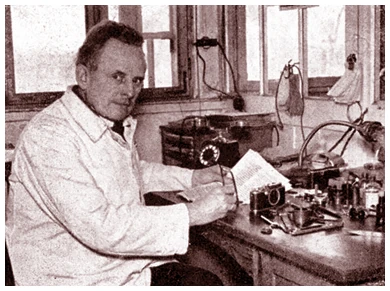Image #1:
Photo By: Museum of the City of New York/Byron Co. Collection
Image Source: https://www.gettyimages.com/photos/hospitals-1800s?mediatype=photography&phrase=hospitals%201800s&sort=mostpopular
Year Created: 1899
Contrast
The image holds a high contrast between the dark shadowed areas and the brightened areas. The lighten areas of the image are what appeals to the eyes of the audience and the light is positioned directly behind the operating table. This draws the focus into the patient, nurse, and two surgeons at the operating table.
Background
Background
The image's background works well and compliments the task at hand being done in the photograph. In the background, are numerous types of operating instruments stowed into cabinetry within the operating table. Things that are in the background that display text (such as the containers in the cabinets) and the photos hanging on the wall are small enough or facing away so that they don't distract the focus of the audience from the subjects.
Depth of Field
Depth of Field
The photographer maintains focus within the photograph from the front to the back. This shows that everything in the image is important for the viewer to acknowledge. The most important part of the image is focused on the back where the subjects are located.
Why did I choose this image?
Why did I choose this image?
I chose this photograph because I feel as if I have a connection with it because of my nursing career I am pursuing. I have spent a few clinical hours in an operating room in the present and it is interesting the differences/improvements between modern-day operating rooms and the one displayed here. All I can think about when I look at this image, the irony that is shown that the glass jar reads "sterile sponges", yet the use of the sterile technique is lacking.
Image #2:
Photo By: Unknown
Year Created: 1949
Simplicity
The photographer in this image kept it simple and only had little to no background of the blank wall. This allowed the attention to remain focused on the individual and the nurse. He also uses the mirror on the iron lung to show the expression of the boy inside.
Feelings
The nurse and the young man seemed relaxed in the image it does not have the same impact on me as the viewer. From this image, I feel as if it is very sad that the young man is bound to this iron lung from a result of polio that had no yet been vaccinated against. It shows that his quality of life is so poor that the nurse has to assist him to smoke a cigarette even though his lungs are impaired in the first place.
Color
Although it wasn't until 1961 that color images began in the industry and black and white images were the only thing used in 1949 when this image was published it actually helps the image. It helps the image display the saddened mood that was discussed above and also gives a sense of authenticity/age to the image.
Why did I choose this image?
This image gives a lot of insight into what the impact of vaccines has had on modern-day life. Before research for vaccines, detrimental illnesses impacted the lives of individuals and specifically polio in this image. Polio, when caught, weakened the muscles throughout the body including the diaphragm disallowing them to breathe. These iron lung machines were used 24/7 by the infected individual for proper ventilation. Such a sad concept is revealed in this photo and I think it is necessary for people to be aware the value of vaccines has made to our society.
Image #3
Photo By: James Nachtwey
Year Created: 1994
Subjects Emotion
In this powerful image, the positioning of the boy shows the viewer the amount of trauma that is apparent on his face due to a Hutu death camp. The image looks as if it were a candid image and the boy had seen something shocking right in front of him. This assists in displaying the utter horror that the boy had faced within the camp it is like he is continued to be exposed to the trauma through this pose.
Rule of Thirds
If you divide the image in thirds vertically Nachtway places the Hutu survivor off-centered and to the right of the image. It allows the image to be balanced and creates a dramatic effect. It also helps the viewer move through the image.
Use of Shadows
Nachtwey uses a good balance of light and shadows to create a dramatic effect. The shadows entail the background of the boy and his neck. The light looks as if it was positioned so that it brightens his face (showing the scars) and so that he is looking into the light.
Why did I choose this image?
As I was looking through all the imagery from 1951 and today, I came across this image of this boy. His facial expression and the amount of trauma on his face made me feel absolute sorrow. Then when reading the article that this photograph came from that expanding on how he was a Hutu survivor, it made me feel extremely hopeful that his life will improve as the years go on.








